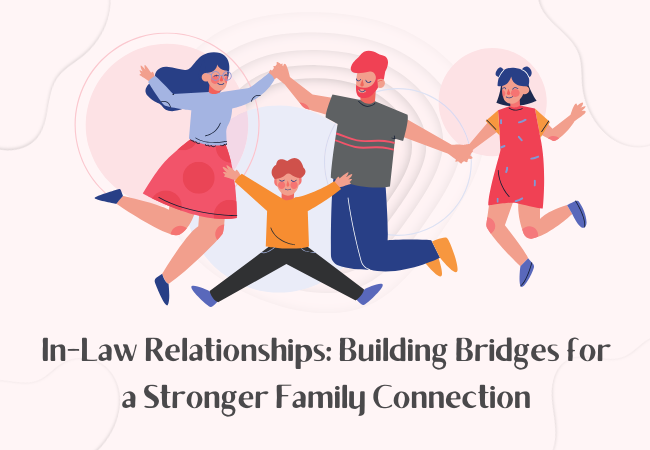Strengthening Family Bonds
Strengthen your Family Bonds and create lasting memories with this comprehensive guide. Discover practical tips, insightful strategies, and heartwarming stories to help you build an unbreakable bond with your loved ones.
Family is the cornerstone of our lives, providing us with love, support and a sense of belonging. In today’s fast-paced world, it’s easy to get caught up in the hustle and bustle of daily routines, often neglecting the importance of nurturing family bonds. However, strong family relationships are essential for our emotional well-being and can have a profound impact on our overall happiness and fulfillment. This guide aims to provide you with practical tips, insightful strategies and heartwarming stories to help you strengthen the bonds within your family.
The Importance of Family Bonds

Strong family bonds offer numerous benefits that extend beyond emotional support. They provide a sense of security, instill values and create a foundation for personal growth. Children who grow up in loving and supportive families are more likely to develop healthy self-esteem, better coping mechanisms and stronger resilience in the face of life’s challenges.
Moreover, strong family ties can have a positive impact on mental health. Studies have shown that individuals with close family relationships are less likely to suffer from depression, anxiety and other mental health issues. Family members can act as a support system, offering a listening ear and providing guidance during difficult times.
Creating Quality Time

In our fast-paced world, finding quality time to spend with family can be a challenge. However, it’s essential to make this a priority. Quality time doesn’t necessarily mean grand gestures or expensive outings; it’s about being present and engaged with your loved ones.
- Family Meals: Sharing meals together is a simple yet powerful way to connect with your family. Make it a habit to gather around the dinner table and engage in meaningful conversations. This not only strengthens your bond but also promotes healthy eating habits.
- Unplugged Evenings: Designate specific evenings as “unplugged” time, where everyone in the family puts away their electronic devices and engages in activities together. Play board games, read books, or simply have casual conversations without digital distractions.
- Outdoor Adventures: Explore the great outdoors as a family. Go for hikes, visit parks, or plan camping trips. These shared experiences create lasting memories and provide opportunities for physical activity and bonding.
Effective Communication

Open and honest communication is the foundation of strong family relationships. Encouraging open dialogue and active listening can help prevent misunderstandings and foster a deeper connection.
- Family Meetings: Regularly hold family meetings where everyone has the opportunity to express their thoughts, concerns and ideas. This creates an environment of inclusiveness and respect for each individual’s voice.
- Active Listening: Practice active listening by giving your full attention when a family member is speaking. Avoid interruptions, maintain eye contact, and ask clarifying questions to ensure understanding.
- Conflict Resolution: Disagreements are inevitable in any family, but it’s important to handle them constructively. Teach your family members effective conflict resolution skills, such as active listening, compromise, and empathy.
Celebrating Traditions and Milestones

Traditions and milestones serve as anchors for family bonding, creating a sense of continuity and shared experiences. Embrace these special occasions and make them meaningful for everyone involved.
- Family Traditions: Establish family traditions that can be passed down from generation to generation. These could include holiday celebrations, annual vacations, or simple rituals like Friday movie nights.
- Milestone Celebrations: Celebrate significant milestones in your family members’ lives, such as birthdays, graduations or career achievements. These occasions provide opportunities to express love, support and pride in one another’s accomplishments.
- Shared Hobbies and Interests: Discover shared hobbies and interests that your family can enjoy together. Whether it’s gardening, cooking or sports, engaging in activities that everyone enjoys can bring you closer and create lasting memories.
Embracing Diversity and Acceptance

Every family is unique, with its own set of dynamics, backgrounds, and personalities. Embracing diversity and promoting acceptance within your family can foster a stronger bond and a deeper understanding of one another.
- Respect Individuality: Encourage each family member to express their individuality and respect their unique interests, talents and perspectives. Celebrate their differences and appreciate the richness they bring to your family.
- Open Dialogue about Differences: Create an environment where family members feel comfortable discussing their differences in a respectful and non-judgmental manner. This can lead to greater understanding and appreciation for one another.
- Inclusive Family Activities: Plan family activities that cater to the diverse interests and abilities of your family members. This ensures that everyone feels included and valued, strengthening the overall bond.
Supporting and Encouraging One Another

Family members should be each other’s biggest supporters and cheerleaders. Offering encouragement and support can help build confidence, resilience, and a stronger sense of belonging.
- Celebrate Successes: Make it a point to acknowledge and celebrate each family member’s successes, no matter how small. This can range from academic achievements to personal milestones, such as learning a new skill or overcoming a challenge.
- Offer Encouragement: Provide encouragement and positive reinforcement when family members face obstacles or setbacks. Remind them of their strengths and capabilities, and offer guidance and support when needed.
- Collaborate on Goals: Work together as a family to set and achieve goals. Whether it’s a shared goal or individual goals, collaborating and supporting one another throughout the process can strengthen your bond and foster a sense of teamwork.
Creating Lasting Memories

Memories are the foundation of family bonds, and creating lasting memories together can strengthen the emotional connections that tie you all together.
- Family Outings: Plan regular family outings, whether it’s a day trip, a weekend getaway or an extended vacation. These shared experiences create lasting memories and provide opportunities for quality time together.
- Photo Albums and Scrapbooks: Document your family’s journey through photo albums or scrapbooks. Encourage everyone to contribute their photos and memories, creating a visual representation of your family’s history and shared experiences.
- Story-Sharing Sessions: Set aside time for family members to share their personal stories, anecdotes and life experiences. This not only fosters a deeper understanding of one another but also creates a rich tapestry of shared memories.
Conclusion
Strengthening family bonds is an ongoing journey that requires effort, dedication, and a genuine desire to nurture the relationships that matter most. By implementing the strategies outlined in this guide, you can create an environment of love, support, and understanding within your family. Remember, strong family bonds not only provide emotional fulfillment but also serve as a foundation for personal growth and resilience. Embrace the unique dynamics of your family, celebrate your differences and cherish the moments you share together. With patience, open communication and a commitment to one another, you can create unbreakable family bonds that will stand the test of time.







